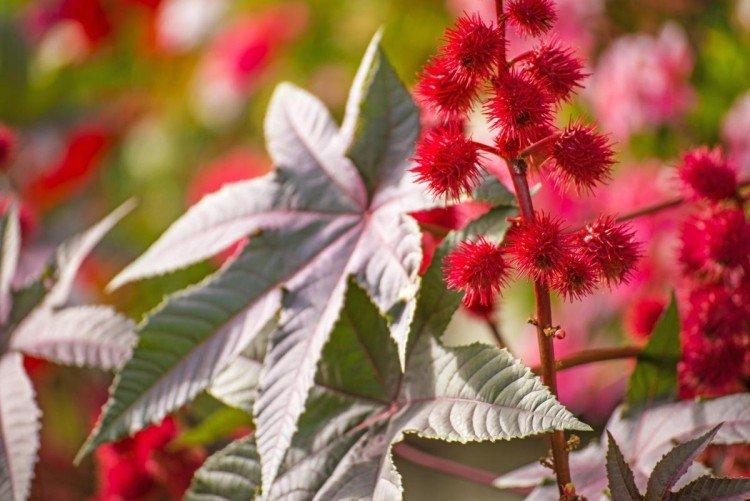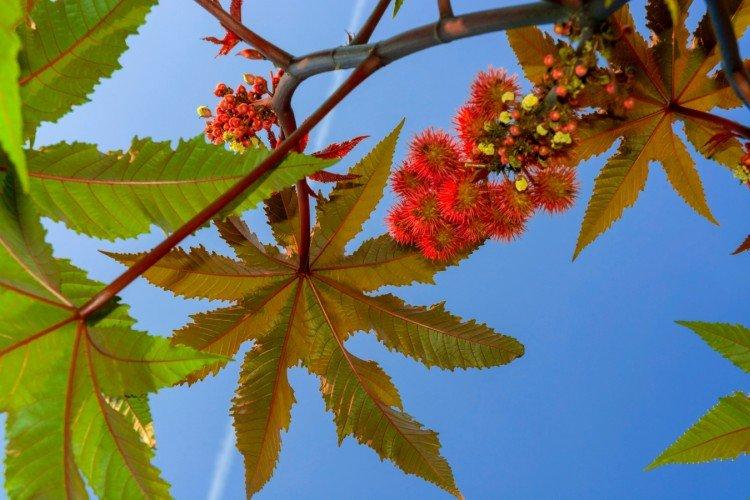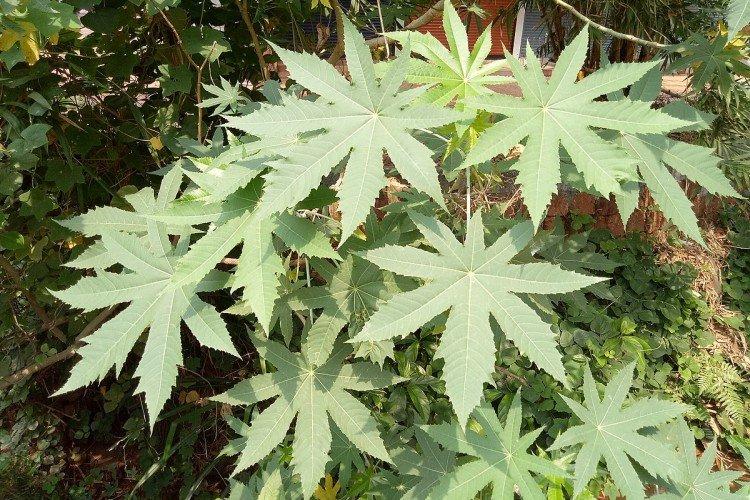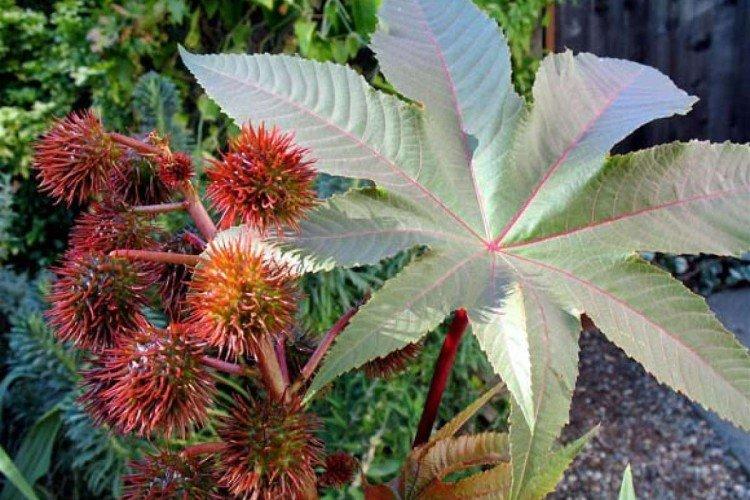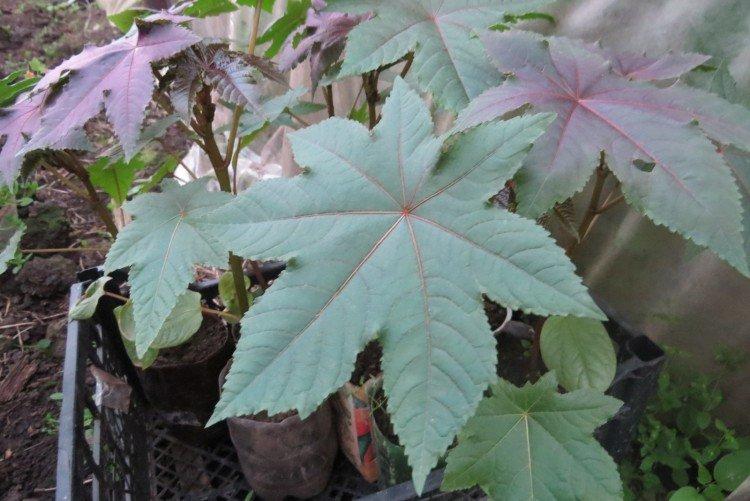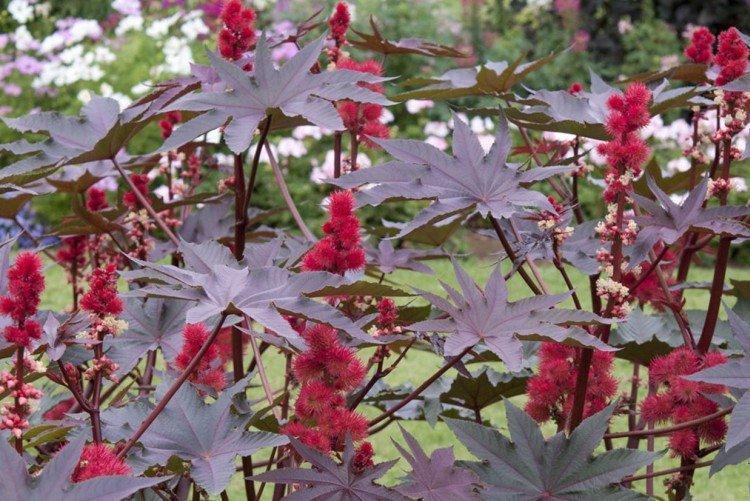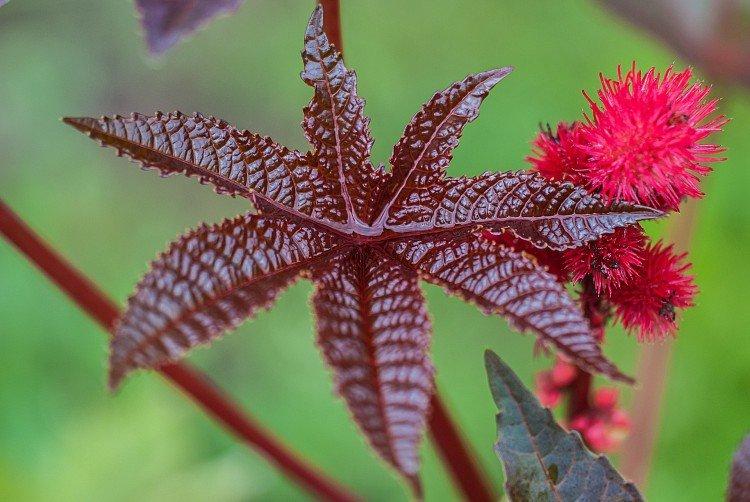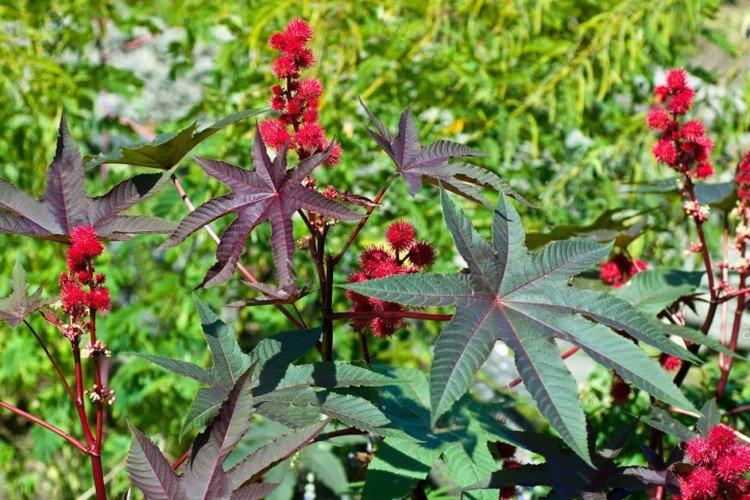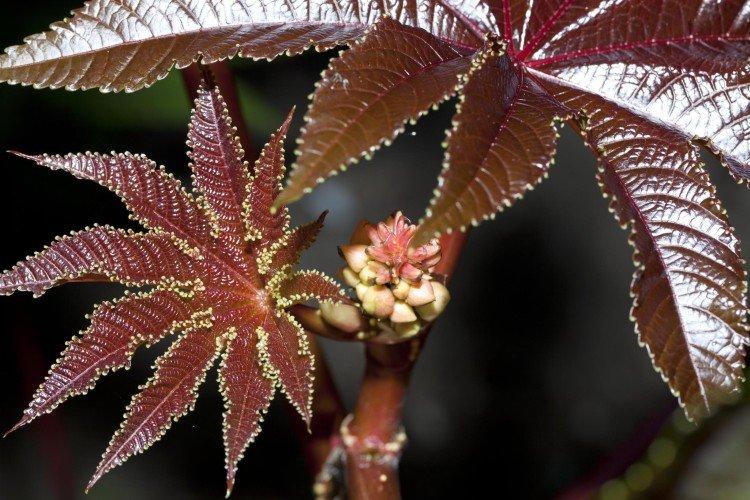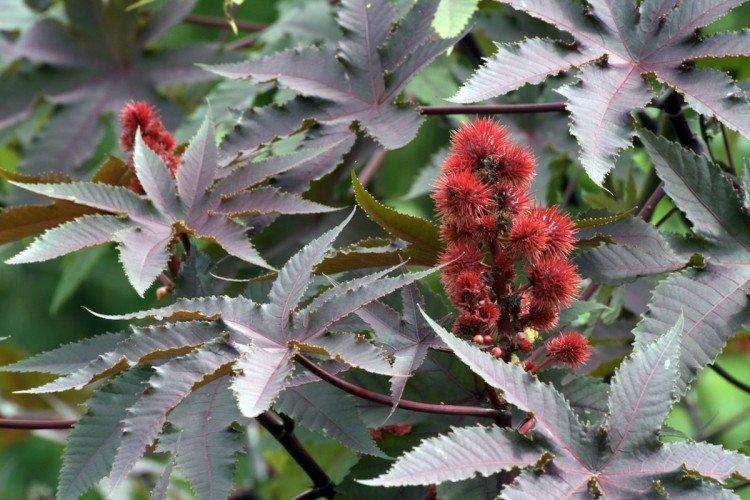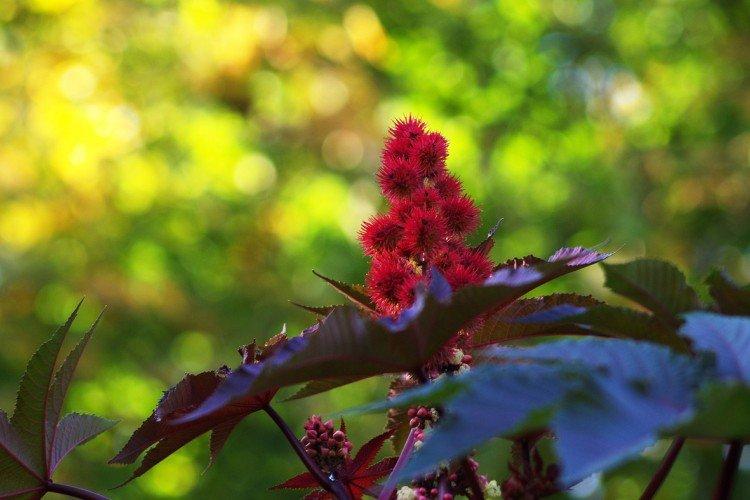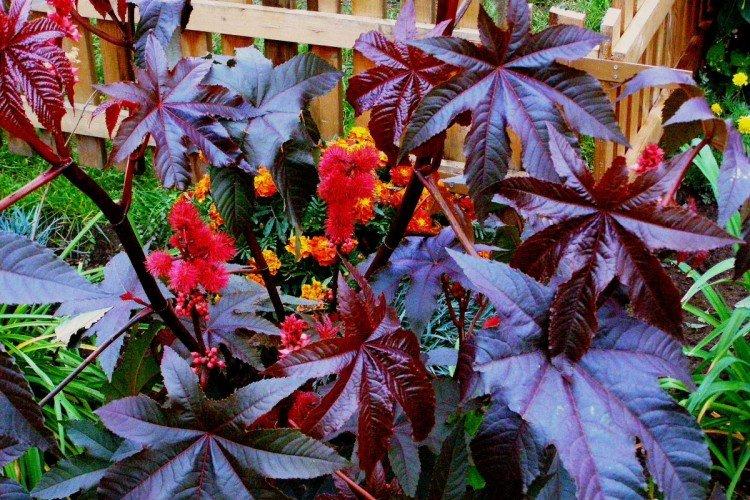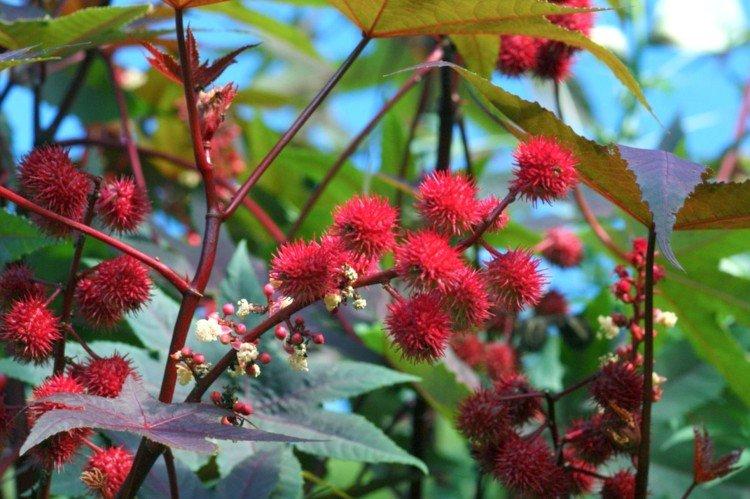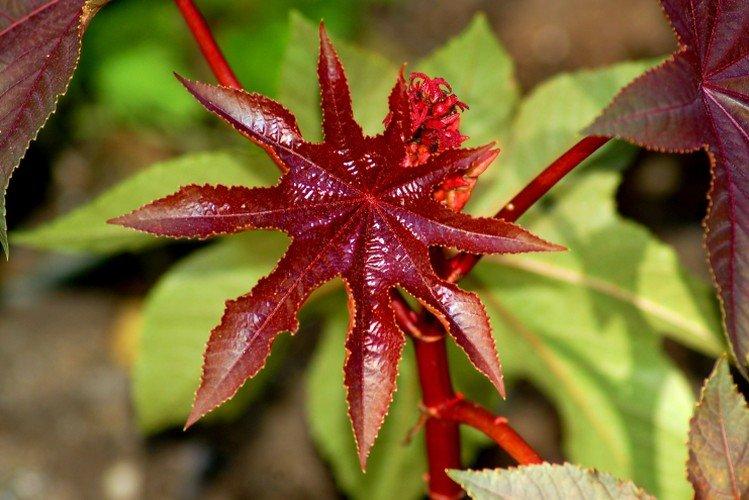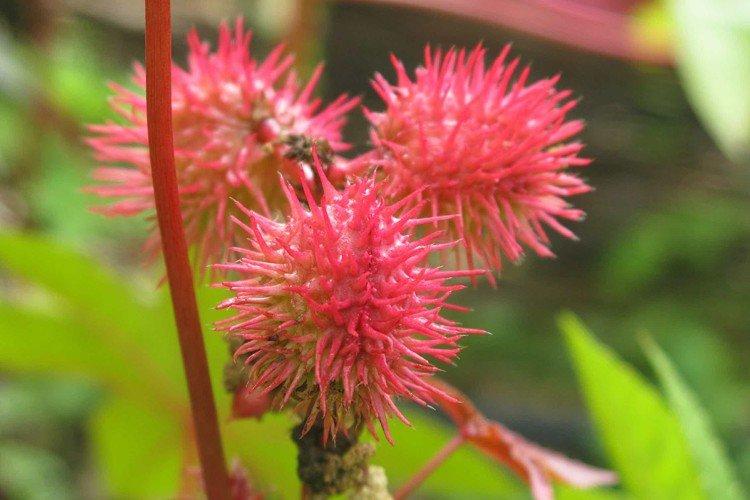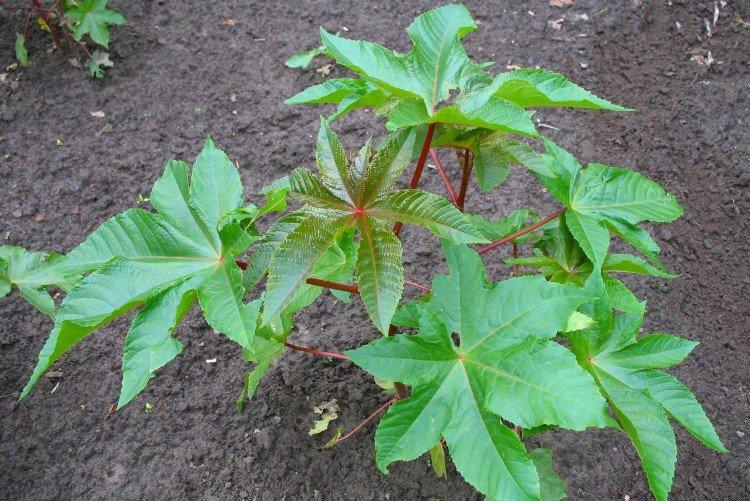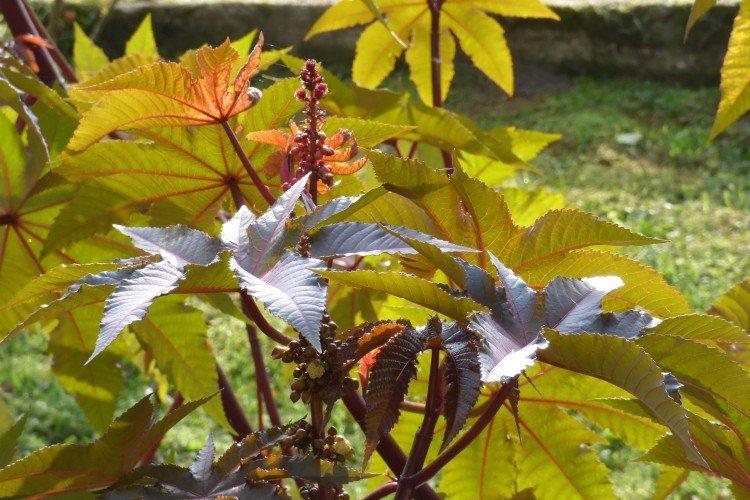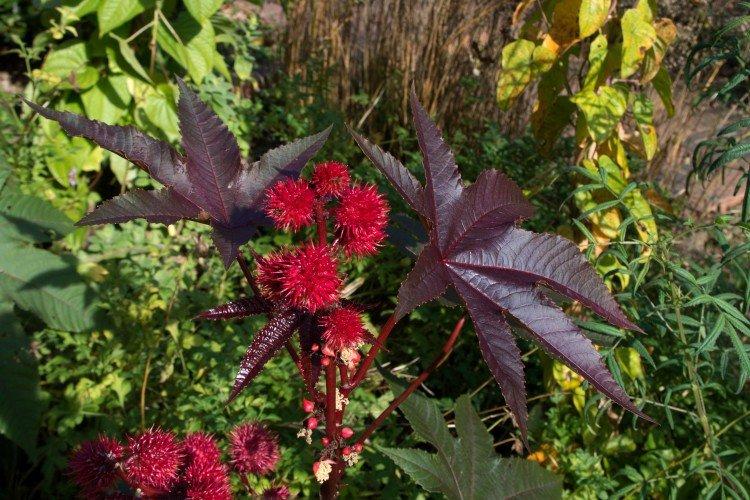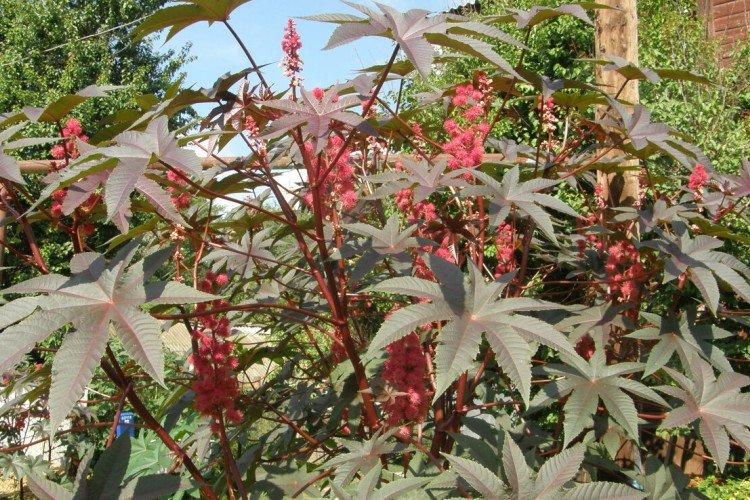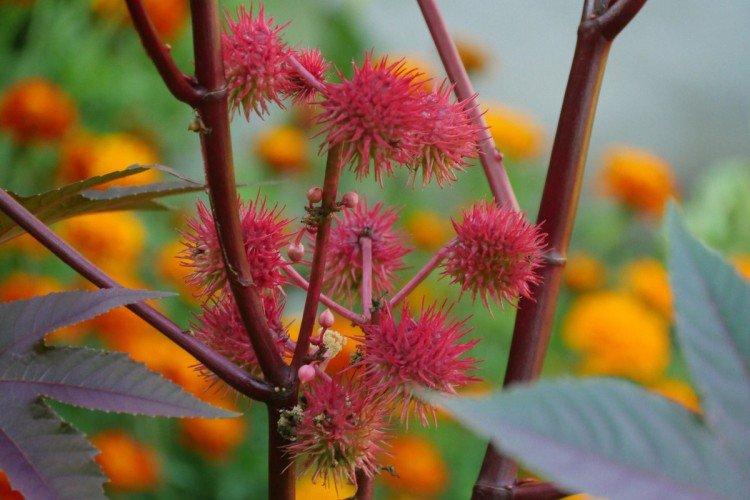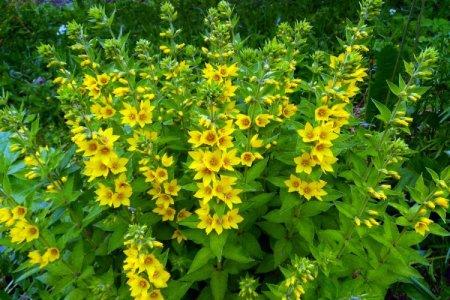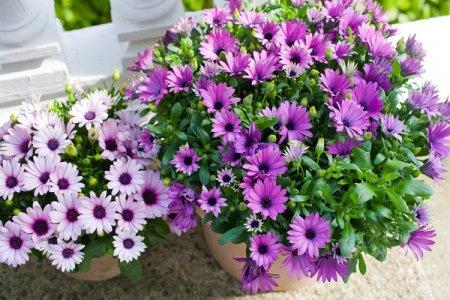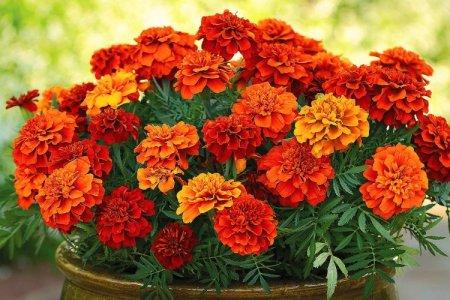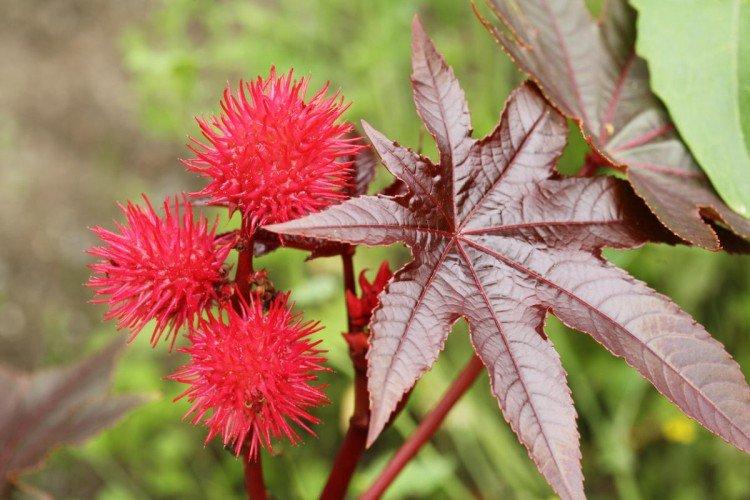
The strange name hides the same unusual flower. At first glance, it is difficult to decide where exactly to send the castor oil plant - to decorative deciduous or flowering. But these are all conventions, because it is much more important to create comfortable conditions for its original beauty. What we are going to tell you about today!
general information
Castor oil plant is a subtropical evergreen perennial that belongs to Euphorbiaceae. It has strong and powerful stems that grow rapidly and are covered with huge decorative leaves. Their size can be up to 80 cm. They are usually finger-like, wavy, with a carved edge and painted in all shades of red.
In nature, the size of the shrub reaches 10 m, but in our latitudes it is grown as an annual. Even so, some varieties grow up to 3 m in just one season. The shoots themselves are hollow and ribbed, with a dense skin.
In summer, castor oil plants bloom with unusual inflorescences. They are collected from small inconspicuous flowers, but each fluffy ball against the background of monstrous leaves instantly attracts attention.
Castor oil plant is a poisonous plant. It is strictly forbidden to eat any of its parts, especially the seeds. For adults, it is sufficient to use gloves or wash their hands thoroughly after care. But if there is a child in the house, perhaps castor oil is not the best choice. Otherwise, it is not a hassle.
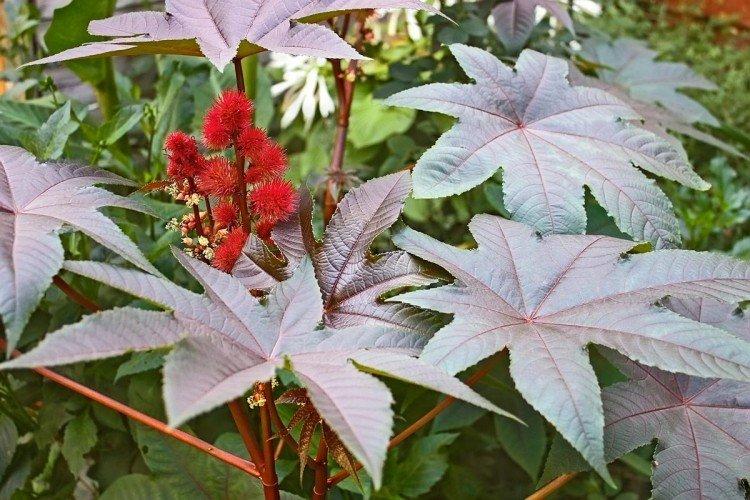
Types of castor bean
There are not so many types of castor beans, and they are very similar to each other, because they descended from the same ancestor. Let's take a look at a few of the most popular ones!
Castor oil Gibson
It is a tall, vigorous shrub up to 1.5 m in height with commensurately large leaves. Depending on the lighting, they shine blue or gray, almost with a metallic effect. And the streaks are distinctly red.
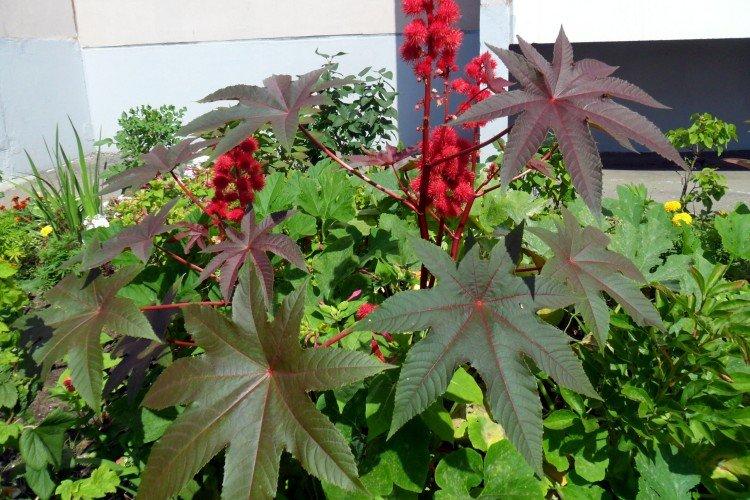
Castor Oil Impala
A relatively compact variety grows on average up to 1.2 m. But at the same time, the Impala castor bean has very powerful shoots, densely covered with dark green leaves with a bronze tint.
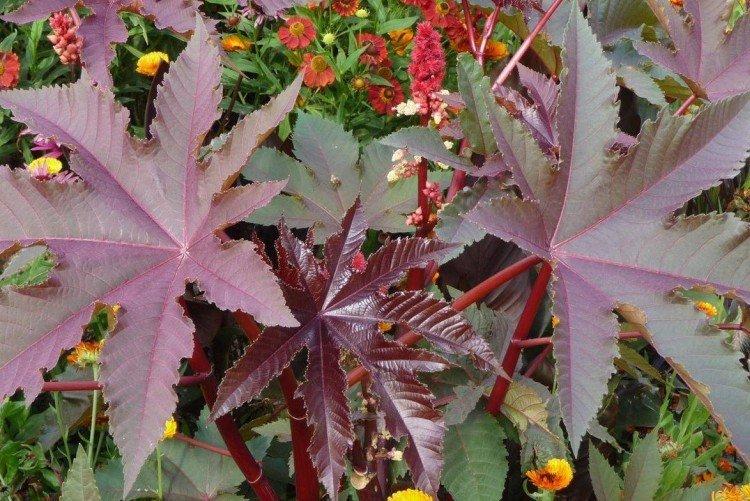
Zanzibar castor oil plant
In our latitudes, it grows only as an annual, but it has such a fantastic rate that during this time the shoots stretch up to 2 m. Large leaves are painted in a bright burgundy color.
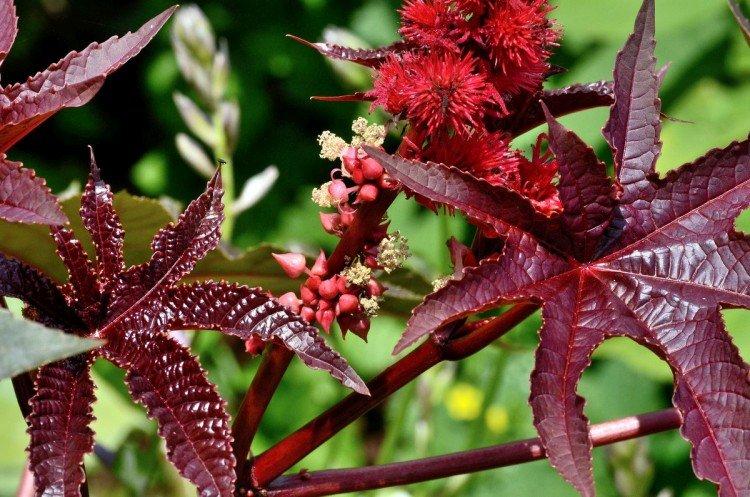
Cambodian castor oil plant
She has ordinary green leaves, and for castor bean, this is her most unusual feature. But the trunk and shoots are almost black.
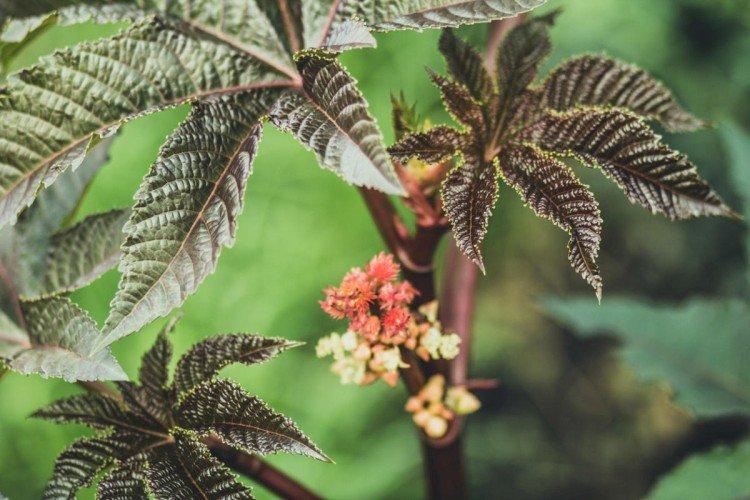
Red castor oil plant
A beautiful decorative variety with large and shiny red leaves. This castor oil plant is completely unpretentious and gets along well with any neighbors in the garden.
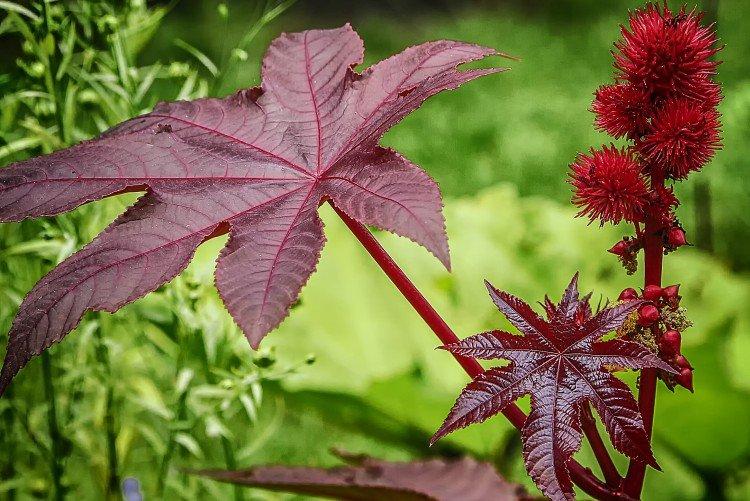
Castor oil care
For all the exoticism of the castor oil plant, it practically does not need anything. She easily adapts to different conditions and copes quickly on her own.
Temperature
Since May, castor oil plants thrive in the garden. She does not need any special conditions even for winter. She still will not tolerate frost, so after drying, just cut the bush.
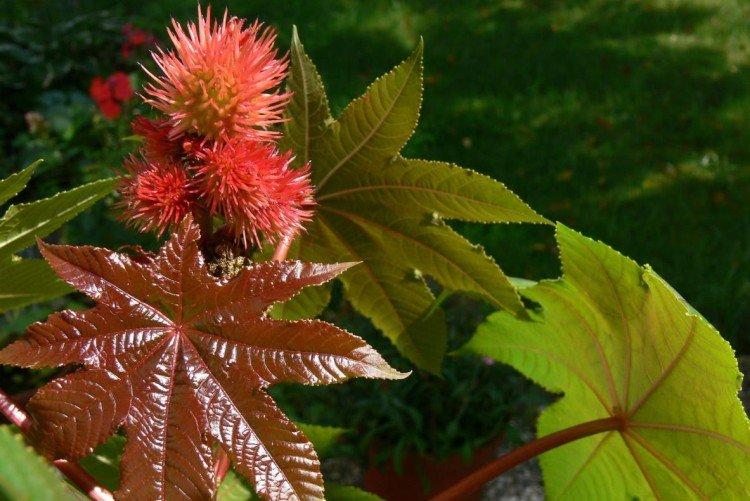
Lighting
We advise you to choose a well-lit area so that the leaves are large and beautiful. It is also important with frequent watering to avoid mold and mildew.
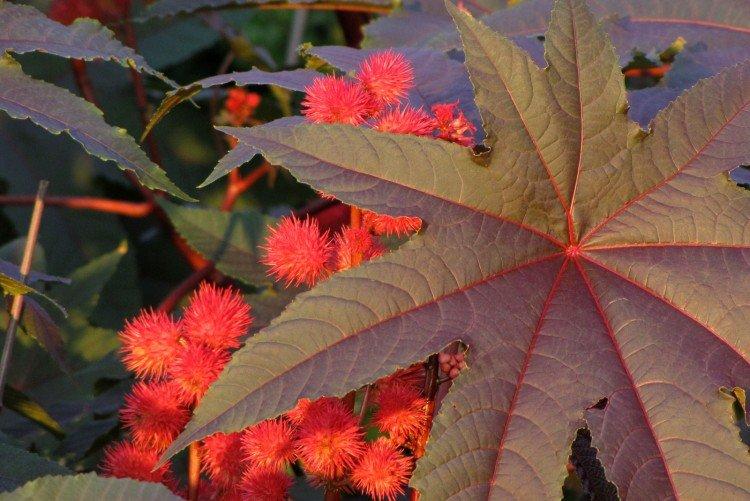
Watering
The main requirement when caring for castor oil plants is regular and intensive watering. In the absence of rain, it is recommended to pour a bucket of water under the cottage every 3-4 days.
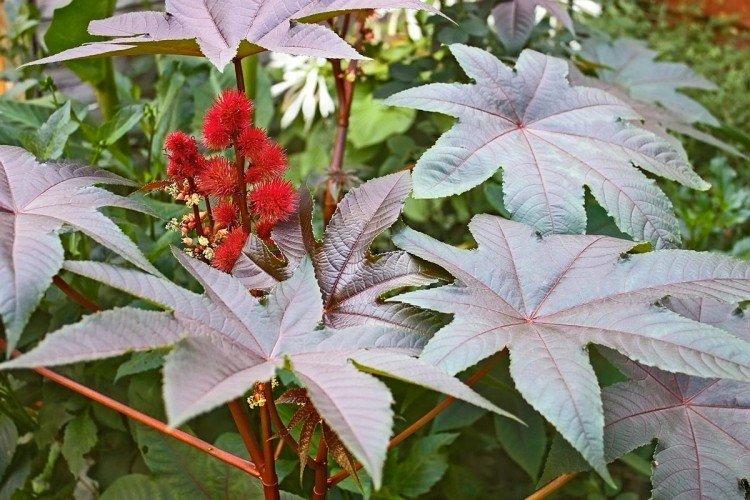
The soil
If you want a really sprawling and strong bush, you definitely need fertile and loose soil. The richer the soil, the better the castor oil plant grows, so you can dig a site with fertilizers in the fall.
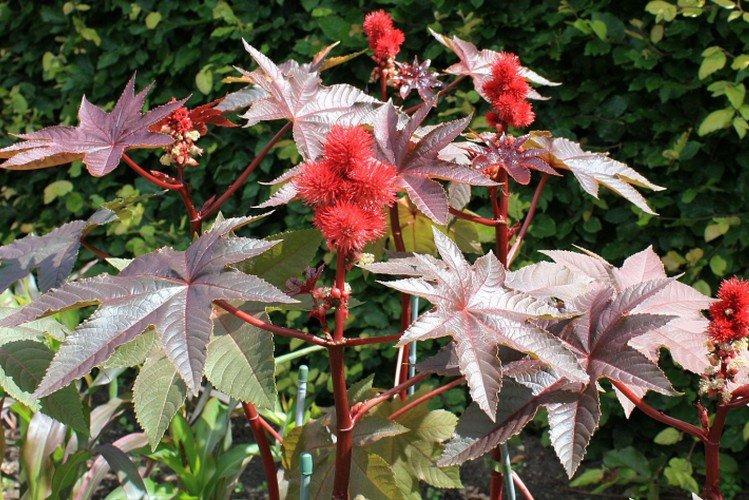
Fertilizers and feeding
Thanks to top dressing, the castor bean grows even more intensively, so we advise you to fertilize three times per season. Ready mixes with a high nitrogen content are suitable.
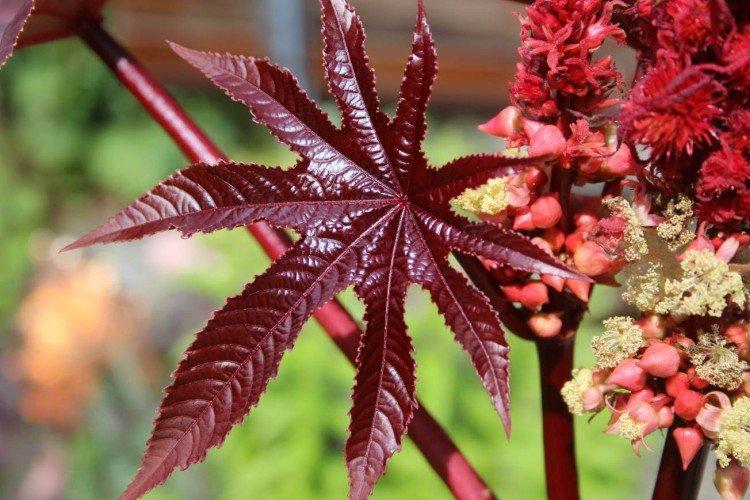
Planting and breeding
Castor oil plant is grown from seed, and no additional tricks are needed here.After scarification, soak them for half a day in a stimulant and plant them in the soil. In open ground, seeds are sown in May, but seedlings can be started in April.
For seedlings, use a small pot for each seed. Deepen the seeds by about 2 cm, sprinkle with earth, and after a couple of days the first descents will surely appear. They grow very quickly, and can reach almost 1 m before transplanting into open ground. Castor bean is transplanted into the garden at the beginning of June by transshipment with a distance of about 1.5 m between the bushes.
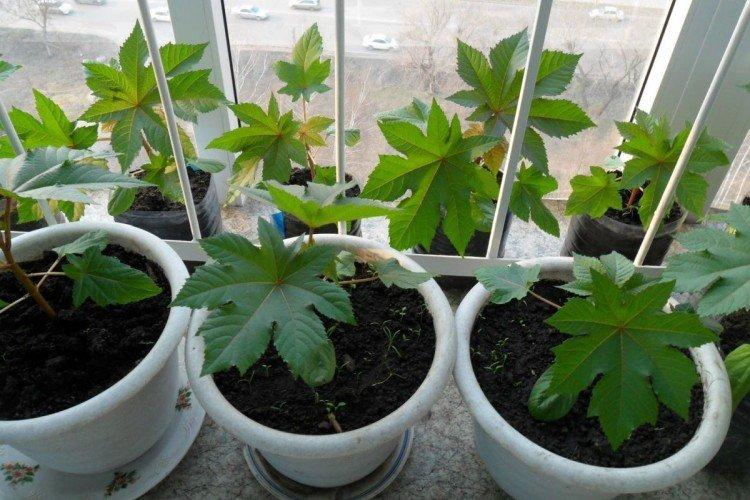
Castor bean pests and diseases
All parts of castor bean contain toxins that are harmful to pests, so you don't have to worry about them. It is very rare for young plants to suffer from caterpillars and wireworms, but insecticide treatment can easily save this.
The most dangerous disease is dry rot, due to which the plant withers and dries. This is just one type of fungus, but there are others. The first symptoms are a whitish coating, soft watery patches, and light, dark, or reddish spots. Fortunately, there is no need to understand the varieties at home. Just use complex fungicides.
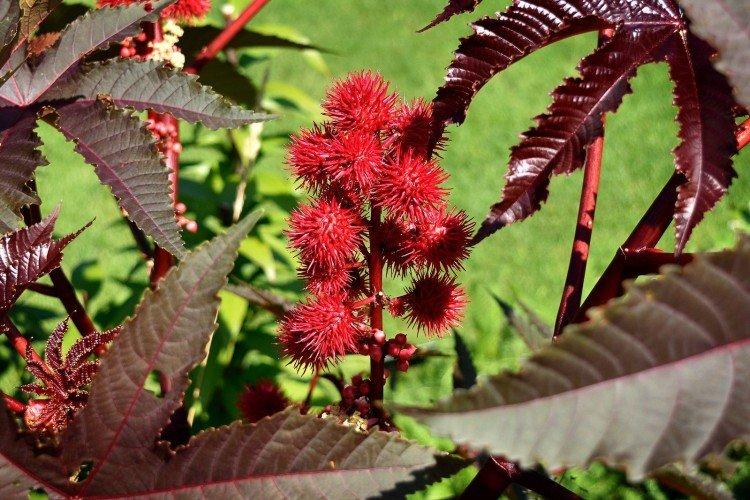
Castor oil - photo
And if suddenly castor oil plant still seems to you some kind of exotic curiosity, look how interesting it looks on the site in real life!
